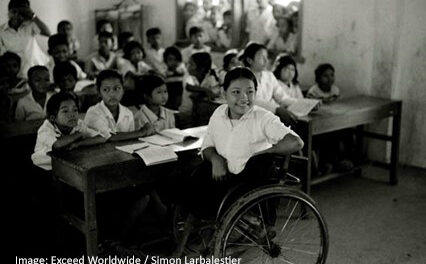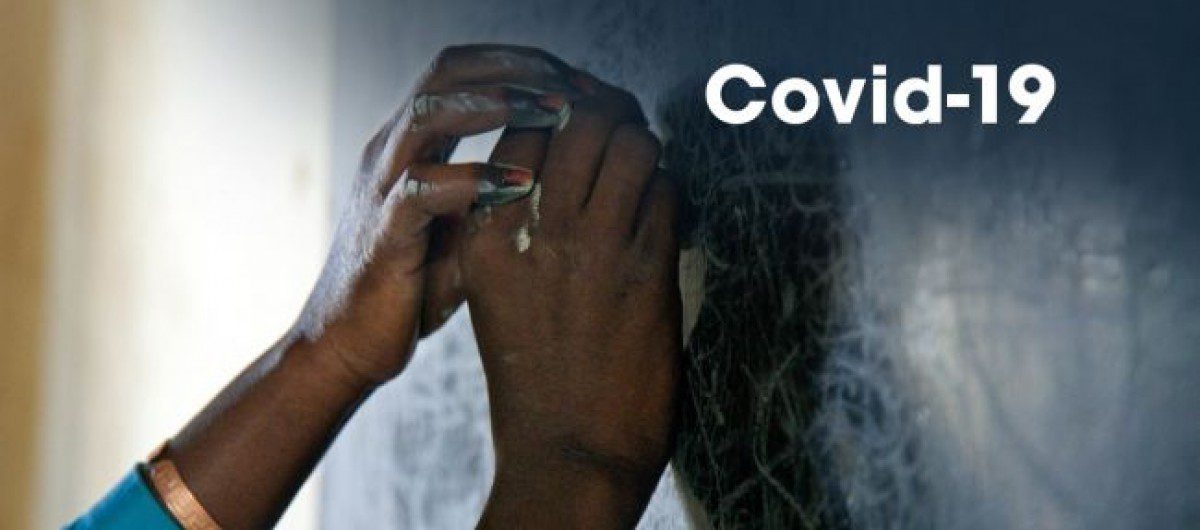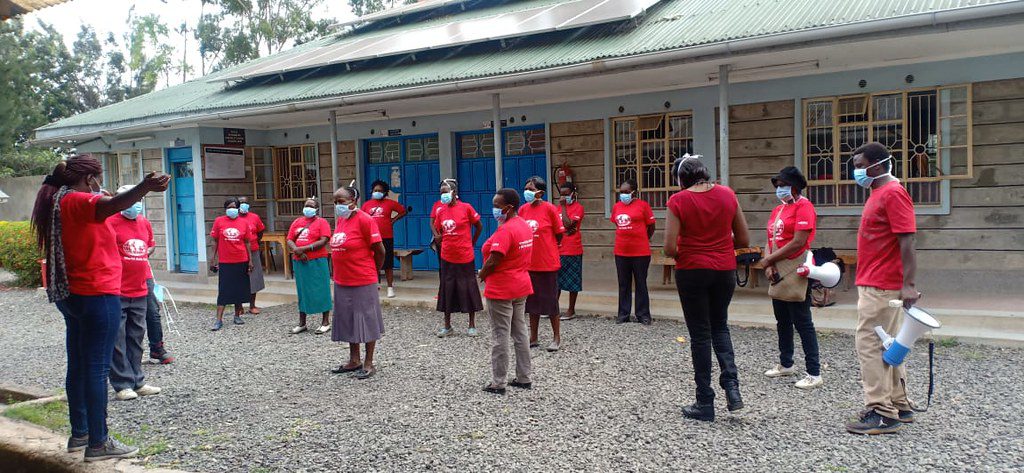This NORRAG Debates: Philanthropy in Education is contributed by Lara Patil, Advisor at NORRAG. She argues that education practitioners and scholars must ensure that transparent, evidence-based decision-making and accountability is maintained by the private sector and for-profit philanthropy in the time of COVID-19 crisis. This will ensure that resources are used effectively and partnerships are enabled for proper recovery from the pandemic in the future. This article was originally published on the NORRAG website on 18 May 2020.
Disasters, natural or man-made, provide “windows of opportunity” for major changes in public policy. Naomi Klein describes “disaster capitalism” as “the desperation and fear created by catastrophe to engage in radical social and economic engineering.” Kenneth Saltman illustrates “capitalizing on disaster” when he details how “the new predatory forms of educational privatization aims to dismantle public schools to privatize and commodify them” in the education sphere. Mark Telling and Kathleen Dill describe disaster politics as “tipping points for change in the adaption of social political regimes.” This leads to the author’s point that we are now, arguably, witnessing the emergence of “disaster philanthropy.”
For education in a time of COVID-19, two key trends and narratives have emerged. First, the philanthropic commitments from internet and technology philanthropists to support the global recovery from the novel coronavirus pandemic are unprecedented. Second, the distance-learning and basic-needs narratives more than ever demonstrate how important it is to support students and education systems through the global education crisis. Several factors can be observed at the intersection of these trends and narratives: the power and influence of technology products and platforms; billionaire technology philanthropists utilizing “for-profit” philanthropy vehicles; and unprecedented challenges to governments and those responsible for educating their population equitably.
New York is an emerging case study for the “windows of opportunity” located at the intersection of these trends. In response to the current pandemic crisis, NY and the Gates Foundation announced they will develop a blueprint to “reimagine” education amid the pandemic. New York Governor Andrew Cuomo announced former Google CEO, Eric Schmidt will head-up a blue-ribbon commission to “reimagine” New York state’s post pandemic reality. The integration of technology in education and every aspect of civic life is central to these public-private partnerships. These announcements are met with harsh critics. Diane Ravitch is highly critical of Gates’ involvement in NYC education because his education ideas, primarily the promotion of charter schools, privatization and the common core curriculum, have largely panned out as failures. Naomi Klien is highly critical of Eric Schmidt and the blue-ribbon commission announcement, terming this new scenario the “Screen New Deal.”
As practitioners and scholars, our role is more critical than ever during this extraordinary moment in time. It is incumbent upon us to analyze real-time educational developments and trends, thus ensuring transparent, evidence-based decision making and accountability in the time of the COVID-19 crisis. Equally important is the imperative to think beyond the immediate and highly visible results of a crisis to address some of the underlying questions and issues that need attention when we imagine what trade-offs there might be for the blurring of lines between public and private.
To ensure that resources can be used effectively and partnerships appropriately enabled, it is essential to revisit several discrete areas of activity. These areas include: a renegotiation of the social contract between public and private spheres; the donor logic of technology philanthropy; and the paradoxes inherent to this time. Placing these activities under well-informed scrutiny will help the development community adequately prepare and position ourselves to organize the partnerships that will be required for the amelioration of education in response to the COVID-19 pandemic and in support of the longer-term recovery.
While an in-depth analysis is not possible in this short piece, a forthcoming working paper will further explore these areas of activity against the backdrop of shifts in the world order, global governance and global aid architecture.
Disaster Philanthropy: Unprecedented Commitments
As of April 17, 2020, commitments and donations to the novel coronavirus pandemic have exceeded $7.8 billion. To put this number in context, the total philanthropic pledges and donations in response to eight of the most recent major hurricanes, earthquakes, and wildfires since September 2017, including hurricanes Harry, Irma, Maria and Dorian, and the Australian bush fires, were $898 million. The philanthropic funding announced in the first five weeks for COVID-19 alone reached $980 million. To compare figures to another public health crisis, philanthropic flows to the 2014 Ebola outbreak in West Africa received more than $363 million over 6 months. Whereas natural disasters, public health crises, and humanitarian crises are typically local and regional in scale, COVID-19 is global. So it is no surprise that the philanthropic response to COVID-19 is of greater magnitude. Nonetheless, the financial flows from philanthropic organizations are still stunning.
While the data and information on philanthropic flows in response to the pandemic are changing rapidly, a key trend is clear: technology corporations and individual technology philanthropists from the United States and China are the majority donors to the COVID-19 pandemic. As of April 8, 2020, the contributions from the U.S. stand at $4.3 billion and the contributions from China (including the Hong Kong and Macau Special Administrative Regions) stand at $931 million. Their combined contributions account for 90 percent of all pledges and 79 percent of total dollar value.
In the U.S. Bill Gates, co-founder and former CEO of Microsoft Corporation, is a unique and powerful voice in the global coronavirus pandemic response. Five years ago, Gates delivered a TED talk describing a global pandemic scenario strikingly similar to the unfolding developments of COVID-19. His message was clear: we are not ready for a global pandemic. Given the work of the Gates Foundation in the areas of infectious disease, the threats of a global pandemic were well understood by the foundation. On February 3, 2020, the Gates Foundation announced that it would immediately commit up to $100 million for the global response to the coronavirus. On April 7, 2020, Bill Gates revealed that the Gates Foundation would make billions of dollars available to help manufacture the most promising vaccines for the new coronavirus. Most recently, reflecting upon the unique position of the Bill and Melinda Gates Foundation to help, on April 15, Mark Suzman, the Gates Foundation CEO, announced additional funding of $150 million which brings the total direct commitment from the Bill and Melinda Gates Foundation to $250 million.
Other U.S. technology philanthropists have also made significant commitments. On April 2, 2020, Jeff Bezos, the founder and CEO of Amazon, announced a $100 million donation. On April 3, 2020, The Michael and Susan Dell Foundation (MSDF), the family foundation of Michael Dell the founder and CEO of Dell Technologies, also announced a commitment of $100 million in support of COVID-19. On April 7, 2020, yet another unprecedented level of giving was reached when Jack Dorsey, the chief executive of Twitter and Square announced, through a series of tweets, his individual commitment to donate $1 billion, approximately 28% of his wealth, to relief programs related to the coronavirus. In the realm of technology philanthropy, each unprecedented philanthropic donation is outdone by the next. As of April 17, Jack Dorsey and Google accounted for more than a quarter of all COVID-19 funding.
While Dorsey’s individual commitment is the single biggest gift announced in response to the COVID-19 pandemic, it is only the latest in a growing list of technology corporations and philanthropists contributing to the cause. In addition to the sheer magnitude of the commitment, and the percentage of his net-worth that it represents, of important note is the for-profit philanthropic vehicle Dorsey has chosen to enact his philanthropic agenda: a philanthropic limited liability corporation. Dorsey announced that he will liquidate $1 billion of his equity in Square, Inc., and transfer the funds to Start Small, LLC, a limited liability company he established to distribute the COVID-19 relief funds. The philanthropic LLC is an example of “for-profit philanthropy,” a giving strategy popular among Silicon Valley philanthropic elites.
The Global Education Emergency
On April 23, 2020, UNESCO reported the number of out of school children worldwide had reached 1, 579,634,506 due to the COVID-19 pandemic. As governments around the world temporarily closed educational institutions in an attempt to contain the spread of the virus, these numbers represented 90.2% of enrolled learners in 191country-wide school closures. The figures are likely much higher as these estimates do not include countries with localized closures, such as Brazil, Canada, India, Russia and the U.S., nor the pre-existing 250 million out-of-school children. The challenges facing governments and those responsible for educating their populations equitably are immense.
In a published opinion by Oxfam, entitled COVID-19 and the Global Education Emergency, Prachi Srivastava outlines three areas of complementary emphasis: the compulsion on the State, considerations for plans of action, as well as challenges and risk. For obligations of the State, Srivastava reminds us that States are the principal duty-bearers under international human rights law to uphold the right to education. For plans of action and alternative educational delivery, Srivastava emphasizes that States and local governments must act quickly, and transparently, to develop and publicly disseminate strategies to the general public that outline plans for alternative methods of educational delivery, including special television programming, radio broadcasting, and virtual and online learning.
Whereas the role that technology should play in teaching and learning is normally a topic of much debate, in this current time marked by a global pandemic, governments are compelled to act quickly in order to develop short-term to longer-term action plans that will transition to alternative delivery mechanisms. While organizations such as the Inter-agency Network for Education in Emergencies (INEE) work to ensure quality, safety, and relevant education for all persons affected by an emergency, the scope and scale of the current crisis is unprecedented.
The absence of clear short-term and long-term plans for continuing schooling during the COVID-19 crisis creates a perfect opportunity for the platforms (companies) or individual philanthropists to propose a platform or plan based on their industry or individual corporate logic. And, if the institutions of public education are not prepared to systematically evaluate the offerings, then the companies and philanthropists by default become the arbiters of the solutions and decide what tools are used. This underscores the author’s emphasis about how it is imperative to examine the intersection of these trends and exercise vigilance so as to ensure transparent, democratic processes. As well, it is crucial to take into consideration the donor logic and potential longer-term implications of solutions during this time of crisis.
At the Intersection
With major commitments from technology philanthropists, in terms of access and equity, there is an opportunity to unleash vast capital and in-kind resources to address the global pandemic and potentially solve some of global education’s most challenging problems. Such mobilizing can have multiple influences, in that it can, simultaneously: push through innovative, yet untested, education agendas at incredible speed through technology platform solutions; advance for-profit philanthropy models popular among many technology philanthropists; and magnify the influence of powerful elites.
The consequence of this is that the philanthropic response to COVID-19 dramatically exacerbates an existing challenge and dilemma in the achievement of the 2030 Agenda for Sustainable Development, and the education related Sustainable Development Goal 4 (SDG4): that is, the role of non-state actors, specifically the role of the private sector and for-profit philanthropy.
Non-State Actors and A Renegotiation of the Social Contract
The 2021 Global Education Monitoring (GEM) report under development, acknowledging how the Sustainable Development Goals recognize the role of non-state actors in the achievement of global education targets, is an exploration of some of the key issues in this global debate. The concept note for the 2021 GEM report clearly sets out the challenges and dilemmas surrounding the role of non-state actors in the achievement of SDG4. With the ultimate aim of providing definitional clarity on non-state actors and their place in education policy and delivery, the concept note emphasizes the need for data and analysis to support a critical conversation on the role of non-state actors across a broad range of policy and geographic areas.
Central to this debate are the blurring of lines between public and private, which encompasses the disruptive nature of for-profit philanthropy and its role in the changing landscape of global education and development. Bilateral and multilateral development institutions encourage the widespread promotion of new public management approaches, while concurrently, governments increasingly renegotiate the social contract by outsourcing services that historically fell within the domain of government and were considered a “public good.” It is no coincidence that in combination with this trend, there is growth in the number, type and influence of “new actors” in the education and development policy sector.
The Donor Logic of Technology Philanthropy: An Emerging “Giving Code”
Donor logic is defined as the process of analyzing or dissecting various institutional rationales to better understand the motivations and actors in the development space. While the donor logic of international actors in education is well documented, the research and literature on non-state actors in education development is just beginning to give us the means to understand the role of emerging actors such as technology barons, celebrities, foundations and technology corporations applying market-based approaches to aid.
With technological innovation as the primary factor that created the wealth driving the new philanthropy; it is no surprise that disruption, innovation, and impact are at the center of what Culwell and Grant (2016) have termed an emerging “giving code.” A new style of philanthropy is emerging from Silicon Valley with new actors, new funding mechanisms and new approaches to philanthropic giving. These technology philanthropists share common patterns both in motive and style of giving which are reflective of theories of change that are markedly different from the more traditional styles of philanthropy (Patil, 2019; Patil, forthcoming). This brief piece will illuminate one aspect of the emerging giving code: for-profit philanthropy. The forthcoming working paper will provide further exploration and analysis.
Emerging technology philanthropists tend to utilize new and somewhat unconventional funding vehicles for philanthropic giving. These creative new structures include: in-house for-profit philanthropic divisions of existing corporations, such as Google.org; for-profit philanthropic limited liability companies (LLCs), such as the Omidyar Network, Emmerson Collective and Chan Zuckerberg Initiative; and for-profit commercially affiliated donor-advised funds (DAFs), such as Fidelity Charitable. These vehicles are the underlying mechanism that enable strategies of increased incorporation of business logic and blurring of boundaries between profit and social purposes in philanthropic agendas, such as impact investing, venture philanthropy and innovative financing.
The allure of these new approaches is great. In addition to increased freedom of investment, the structure provides increased flexibility to directly access the human resources, technology, and products of an affiliated corporation. They also enable greater flexibility to engage directly in policy advocacy and offer greater privacy and control. These strategies would either be heavily regulated, or not be possible, through the more traditional US 501(c)(3) tax-exempt foundation. The (limited) downside of these models are the taxes incurred. With creative accounting, however, the taxes incurred can be minimized (Brakman Reiser, 2018).
The analysis of the donor logic of technology philanthropists and for-profit philanthropy is critical because as advocates for educational equity and inclusion, we need to ensure that the new ways of education, in their speed of deployment (in their speed to market), do not inadvertently nullify those aspects and structures of educational practice (praxis) and policy (polity) that have proven effective in transforming the lives of the most vulnerable through education.
A Paradox and A Path Forward
As outlined above, in terms of access and equity, the major commitments from technology philanthropists create an opportunity to unleash vast capital and in-kind resources to address the global pandemic and potentially solve some of global education’s most challenging problems. Such mobilizing is multi-sided, in that it can simultaneously push through innovative, yet untested, education agendas at incredible speed through technology platform solutions; advance for-profit philanthropy models popular among many technology philanthropists; and magnify the influence of powerful elites.
This creates a paradox in that the final responsibility for the coherence and overall delivery of, at least, basic education, lies with the State, where in contrast, private money has an optional responsibility to consider the public good. When philanthropy takes care of “the last mile” or intervenes to innovate and test new ideas, this is complementary and mostly welcome, especially by recipients. When philanthropy seeks to “move the needle” on delivery of public policy, what are its responsibilities for failure or unintended consequences? When, in some cases, philanthropy supplants the role of the public sector, what can we learn about the longer-term impacts for education provision and quality overall?
This is where innovative scholarship can be used to untangle the above paradox and help us navigate our way through uncharted waters. As a scholar whose research interests lie at the intersection of education development, donor logic, non-state actors, technology philanthropy and the emergence of for-profit philanthropy, this author wants to make the point that it cannot be stressed strongly enough that a new form of analysis of the opportunities, costs, and growing power of for-profit philanthropy to disrupt global education in pandemic times is of the utmost utility at this point in time.
The author asserts that further analytical innovation in this area will advance the field of comparative education and contribute to a better understanding of how the blurring of lines between the public and private sectors, the creeping acceptance of results-based aid and the consequent weakening of commitment to public goods will potentially alter education development policy tools. Now is the time to push this important work forward so that we can synthesize the best of the new philanthropy with the proven values and commitments taken from our experiences with what works as far as educational equity practice and apply this new hybrid field of endeavour to achieve our shared objective: the achievement of universal educational equity, inclusion and opportunity for all.
Contribute: The NORRAG Blog provides a platform for debate and ideas exchange for education stakeholders. Therefore, if you would like to contribute to the discussion by writing your own blog post please visit our dedicated contribute page for detailed instructions on how to submit.
Disclaimer: NORRAG’s blog offers a space for dialogue about issues, research and opinion on education and development. The views and factual claims made in NORRAG posts are the responsibility of their authors and are not necessarily representative of NORRAG’s opinion, policy or activities






